The 4 Stages of a K-12 Strategic Plan Your Community Will Actually Support











“Strategic planning guides educational development by giving a common vision and shared priorities. Educational planning is both visionary and pragmatic, engaging a wide range of actors in defining education’s future and mobilizing resources to reach its goals.”
Tackling your K-12 strategic plan? From your district’s mission, values, and goals to how it will achieve them, community engagement is essential for your plan’s success. When your plan resonates with your staff, students, and community, you gain their trust, support, and participation in making it happen.
Once your district has chosen a strategic planning model, it’s time to decide how you’ll gather community feedback to inform your plan. ThoughtExchange reduces time to engage large, diverse groups of people and improves discussion quality, making it the perfect platform for district strategic planning.
Whether you’re already using ThoughtExchange for your strategic planning or you’re considering new community engagement tools, this article will guide you through the community engagement process with our AI-powered platform.
In this Article
3 best practices for strategic planning engagement
Through our work within the K-12 education sector, we’ve seen three best practices that result in better, more effective, supported plans.
1. Get everyone on the same page
To start, agree on one strategic planning model. ThoughtExchange lets you engage educational partners in real-time discussions to ensure everyone understands and supports the plan.
2. Be a collaborative leader
Collaborate with educational partners to develop an actionable strategic plan. Demonstrate your commitment to collaborative leadership by supporting scaled, safe, inclusive, real-time engagement. Transparent, collaborative planning demonstrates the district’s respect for educational partners’ perspectives and builds trust.
3. Engage your community early and often
Commit to consistent community engagement. Districts that engage early and throughout the planning process have a greater chance of building a successful, supported plan. Empowered with community insights, leaders can base their plan on their community’s needs.
“ThoughtExchange has been invaluable for me in gathering real-time input from the diverse voices in our community. It’s helped us remove barriers to participation and surface key themes that we may otherwise miss.”
The 4 stages of successful K-12 strategic planning
1. PLANNING: Inform strategic direction
Gather baseline data by including diverse educational partners in one or more engagements, so your strategy aligns with their perspectives.
Include a broad, open-ended question like: What are the most important things our schools should consider as we work together to prepare our students for their future? This helps people be creative while learning to contribute to the process.
Steps to take using ThoughtExchange:
- Gather input from the district educational partners—students, parents, teachers, and community members—to establish what to consider, and how the community wants you to address it.
- Gather input from senior leadership/board of trustees/strategic planning committee on their priorities for the district’s strategic plan.
2. READINESS: Validate strategic priorities
You’ve based your strategic plan’s priorities on your community’s insights. Now, validate your strategic objectives with an engagement—ask your staff how these align with the daily strategies they use to fulfill their roles.
Ensure that everyone can share confidentially how the strategy enhances or hinders their work. Adjust your strategy if needed. Getting internal buy-in is essential to success. After getting internal alignment on your plan’s priorities, share it with the wider community.
Steps to take using ThoughtExchange:
- Gather feedback on the draft plan to assess whether you accurately captured the input and identify any areas that may have been missed.
- Assess if the draft plan supports the student outcomes in your Portrait of a Graduate.
3. ACTION: Implement strategy
Engage with and elicit ideas from your educational partners after you’ve implemented your plan. Including them in important decisions will foster trust and transparency, encourage buy-in, and contribute to a successful strategic planning process.
In an interview with Protocol, ThoughtExchange’s CEO, Dave MacLeod, said that leaders need to take action based on their people’s insights—or explain why they’re not taking action. Even if you don’t use your community’s ideas, they’re more likely to support the ideas you implement if you consulted them.
Steps to take using ThoughtExchange:
- Operationalize the plan with staff and administration to ensure alignment and surface ideas to achieve your plan’s goals.
4. REFLECTION: Navigate critical decisions
Check in with your educational partners after implementation and assessment. Be ready to reassess and pivot with your educational partners’ support.
This will help you build community ownership and buy-in, ensuring greater adoption. Consider what information to communicate along with your Exchange—such as how far along you are in the plan and how you intend to use their feedback to inform your decisions.
Steps to take using ThoughtExchange:
- Check in with educational partners to evaluate the plan and the progress being made toward your plan’s goals. Identify areas of growth and need.
“ThoughtExchange is a game changer. Without it, it would take us days to go through our engagement data and get it to this level of detail. We don't have to read through every single response. It's all right here for us.”
Your roadmap to a community-backed plan
The journey of a successful K-12 strategic plan doesn't end once it’s published. Districts that achieve their goals stay in lock-step with their communities through thoughtful implementation and continuous improvement.
From initial planning to ongoing reflection, your community's voice is the most valuable asset you have. With a transparent and collaborative process through all four stages, your district’s strategic plan will be truly actionable and supported.





